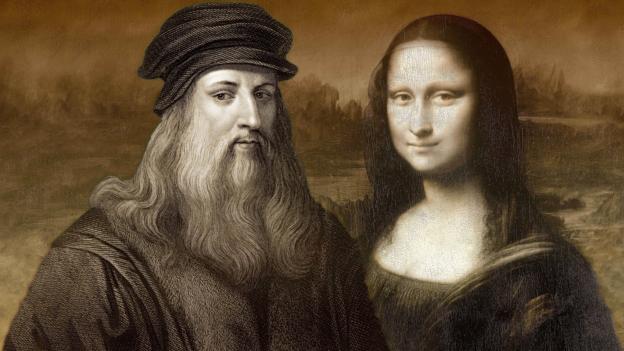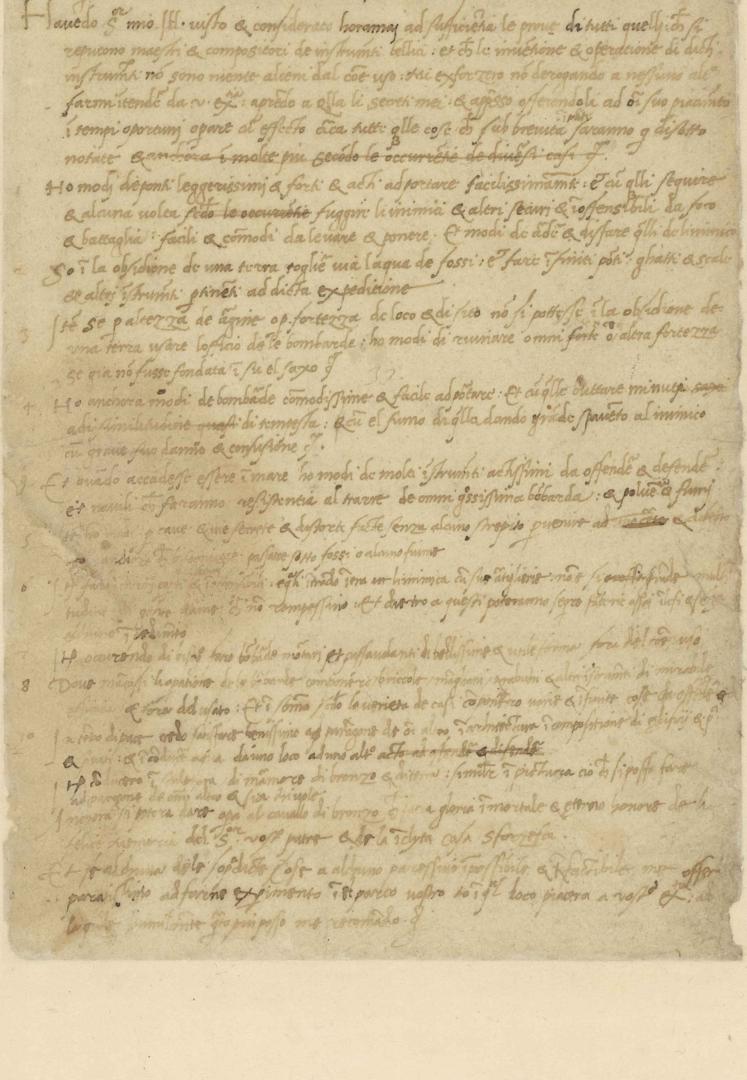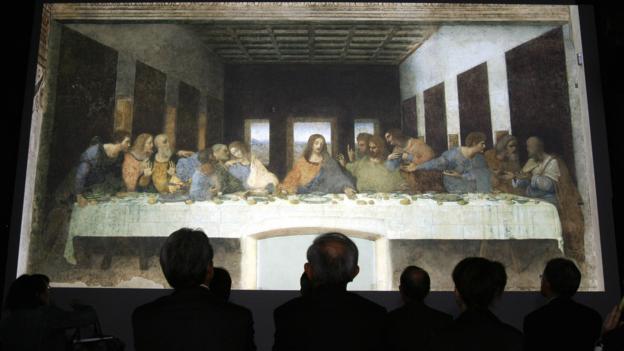Experts critiqued da Vinci’s CV. They weren’t impressed

It’s Leonardo da Vinci’s 564th birthday today. His most famous paintings, The Mona Lisa and The Last Supper, still draw devoted and curious crowds today. But, could the Renaissance artist, mathematician, engineer and inventor get hired today?
BBC Capital asked two experts to take a look at da Vinci’s CV, taking into account the things so many of us get wrong when we prepare our own show-and-tell document for a job search. The answer: although a genius, da Vinci would have a hard time getting a second look from a hiring manager, based on his negative, too-thin and misguided CV.
Let’s take a look.
Denver-based executive CV writer and former recruiter Laura Smith-Proulx has revised thousands of resumes over the course of her career. And she sees the same problems over and over — issues that apparently extend back to the 1400s based on her review of da Vinci’s CV.
If he were alive today and looking for a new position (no doubt a role with fewer demands on his time and substantially greater compensation, Smith-Proulx ventures), his CV would fall short in some key areas: “dwelling on the negative, failing to see their bottom-line contributions, and straying too far from the skills that interest employers”, she said “He’d have the same issues as many job seekers.”
VBA437162 Letter to Ludovico il Moro from Atlantic Codex (Codex Atlanticus) by Leonardo da Vinci, folio 1082 recto by Vinci, Leonardo da (1452-1519); Biblioteca Ambrosiana, Milan, Italy; (add.info.: The Codex Atlanticus is the largest collection of Leonardo da Vincis papers. Originally gathered together by the sculptor Pompeo Leoni, it is bound in twelve volumes. Its name refers to its large size, being comparable to an atlas.); De Agostini Picture Library Metis e Mida Informatica / Veneranda Biblioteca Ambrosiana; PERMISSION REQUIRED FOR NON EDITORIAL USAGE; Italian, out of copyright
PLEASE NOTE: Bridgeman Images works with the owner of this image to clear permission. If you wish to reproduce this image, please inform us so we can clear permission for you.
Accentuate the positive
So why does this happen? Human nature. “Unfortunately, many people think of huge, exhausting projects in negative terms,” Smith-Proulx said. Case in point: “It’s reported that when working on his famous painting The Last Supper, da Vinci toiled for long days – still unconvinced that his finished product was accurate (despite its fame since then as one of the most revered artworks of all time).”
Unfortunately, many people think of huge, exhausting projects in negative terms.
His 1400s-era CV betrays his lack of confidence where da Vinci states: “Partially finished project delivered against impossible deadline – earning fame for sweating the details and losing sight of the big picture….” (pun intended).
For better odds, he could use a modern day trick, turning his exhaustion into a winning combination sure to be a hit with his next potential employer, she said.
“High-quality deliverables (winning accolades in the industry) produced in tight timeframe, taking on extra hours and keeping management updated on status.”
Tokyo, JAPAN: Guests look at a life-sized projected image of «The Last Supper» which is 4.6m x 8.8m during a press preview of the digital exhibition «The Da Vinci Code Museum» in Tokyo, 26 April 2006. The exhibition will start 27 April and run until 23 June and is expected to draw big crowds following the novel and soon-to-be-released film based on Dan Brown’s controversial «The Da Vinci Code». AFP PHOTO/TOSHIFUMI KITAMURA (Photo credit should read TOSHIFUMI KITAMURA/AFP/Getty Images)
Seize the value of influence
That’s just one fix. But consider the value of being seen as a global influencer these days. “In da Vinci’s case, this would require stating ‘Inspired awe among civilians, royalty, and writers’, while perhaps dropping a note about living on as a character in the Assassin’s Creed video game series long after his time on earth,” Smith-Proulx advised.
“Seriously, this is better than trying to convince employers of more complex (and dubious) activities, such as his fascination with medical science and the study of human physiology against the emotions derived from the heart or liver.” Save those for interview discussion.
Don’t distract the new boss
And while we are all quite proud of our contributions to the world beyond our careers, frankly, employers don’t care and such details only serve as a distraction. In da Vinci’s case, that means focusing “more on his success than his ventures into seemingly unrelated subjects”, Smith-Proulx noted.
“An employer who needs an engineer, for example, would find [da Vinci’s] technical drawing and designs for bridges, flight, hydraulic pumps, and a steam cannon fascinating (See: “Produced complex civil engineering project drawings supporting Constantinople bridge”),” she said. But, his penchant for investigating “designs for walking on water or [mentioning that he] 'studied faces and emotions, depicted babies in utero, and wrote in mirror-image text’, just don’t have the same ring.”
With revisions made, I’m confident Mr Da Vinci would be hired. He comes referred and has a sound reputation, complete with endorsements.
The bottom line, said Smith-Proulx: For da Vinci to have a shot at catching the eye of a top employer today, he’d have to tweak his CV to stick “to the relevant details, resist the urge to impress – or horrify – employers with tales of out-there exploits, and refrain from presenting irrelevant facts”.
Appearance matters
Meanwhile, Tampa, Florida-based Adam Lloyd, president of global executive search firm Webber Kerr Associates, said: “Given today’s age of light-speed, we need [a CV] to be reviewed quickly while establishing tailored credibility.” As it stands, da Vinci’s document falls short.
Smart targeting, modernised
That’s not to say the master artist didn’t get some things right. Kudos are in order for the “clear, narrowly defined objective that is written specifically to his target employer: the Duke,” said Lloyd. “Well done, very personalised.” But da Vinci fails to do something crucial to modern-day job seekers: he hasn't developed “a consistent brand, let alone any brand to this personal marketing piece”. And what about a social presence, a URL to see his vast collection of works? Must haves.
Bravo, noted Lloyd, for da Vinci’s presentation of a CV that’s not covered in wild fonts, colour schemes or images. “But, I think it’s a little too simplistic. A little more white space for the eye will help with some font variation, headlines and categorisation,” Lloyd advised. “The document [needs] to be skimmed and received in a matter of seconds, rather than minutes of reading paragraphs.”
E9CJNJ Mona Lisa, Leonardo da Vinci, 1452 — 1519, Italian painter, sculptor, architect and engineer,
It’s not all about the CV
While da Vinci is clear about what he will do for the Duke (per needs analysis) and what he is capable of, “it lacks specific examples of completed work that relates” to the work he wants to do his prospective employer. To remedy this, da Vinci would need to clearly “map his professional wins, experiences and outcomes and tie these to what he states, building confidence in the Duke’s eyes”, Lloyd said.
“With revisions made, I’m confident Mr Da Vinci would be hired. He comes referred and has a sound reputation, complete with endorsements,” Lloyd said. ”The conventional CV is only one of many factors that validate a candidate’s ability to do a job. It’s … not an end-all list of complete attributes.”
Политика конфиденциальности | Правила пользования сайтом








